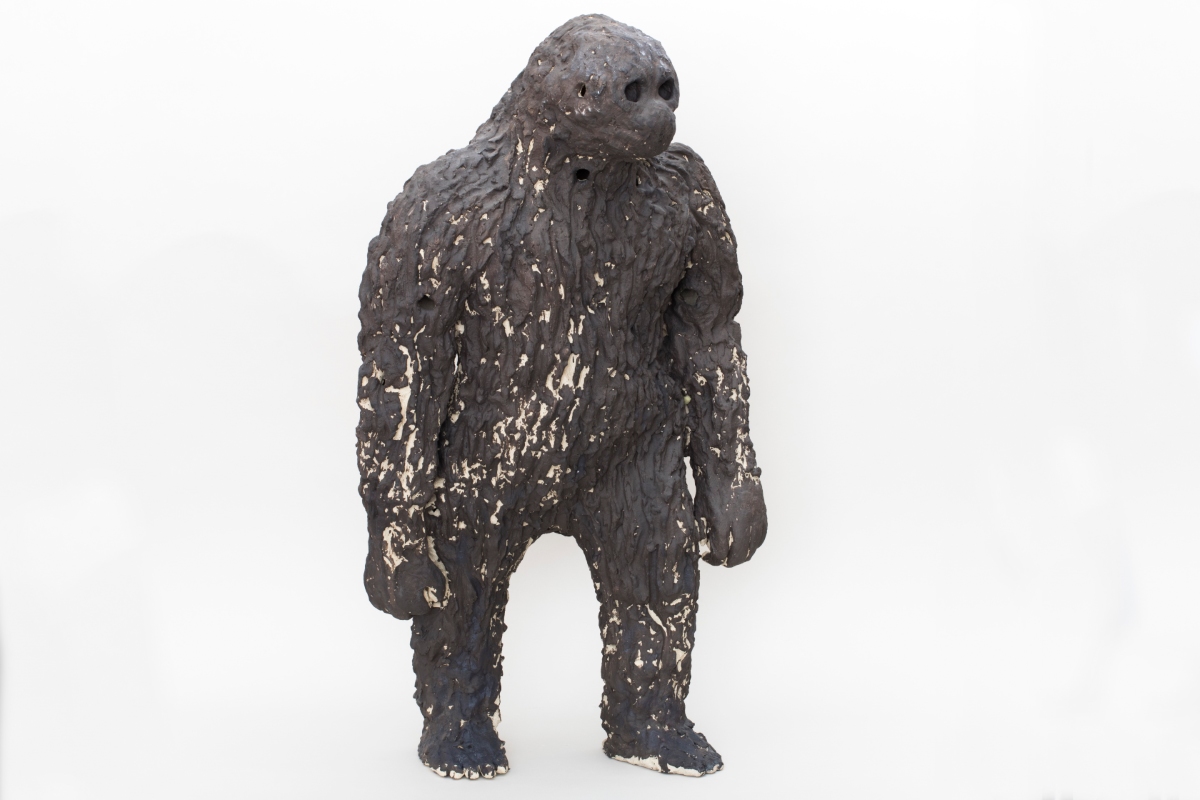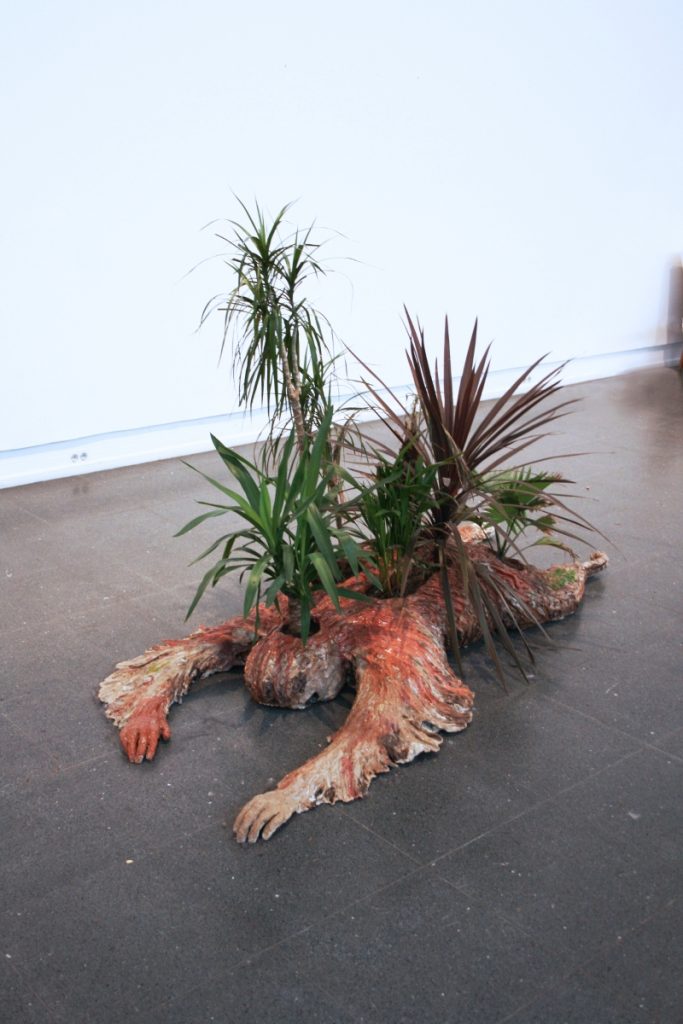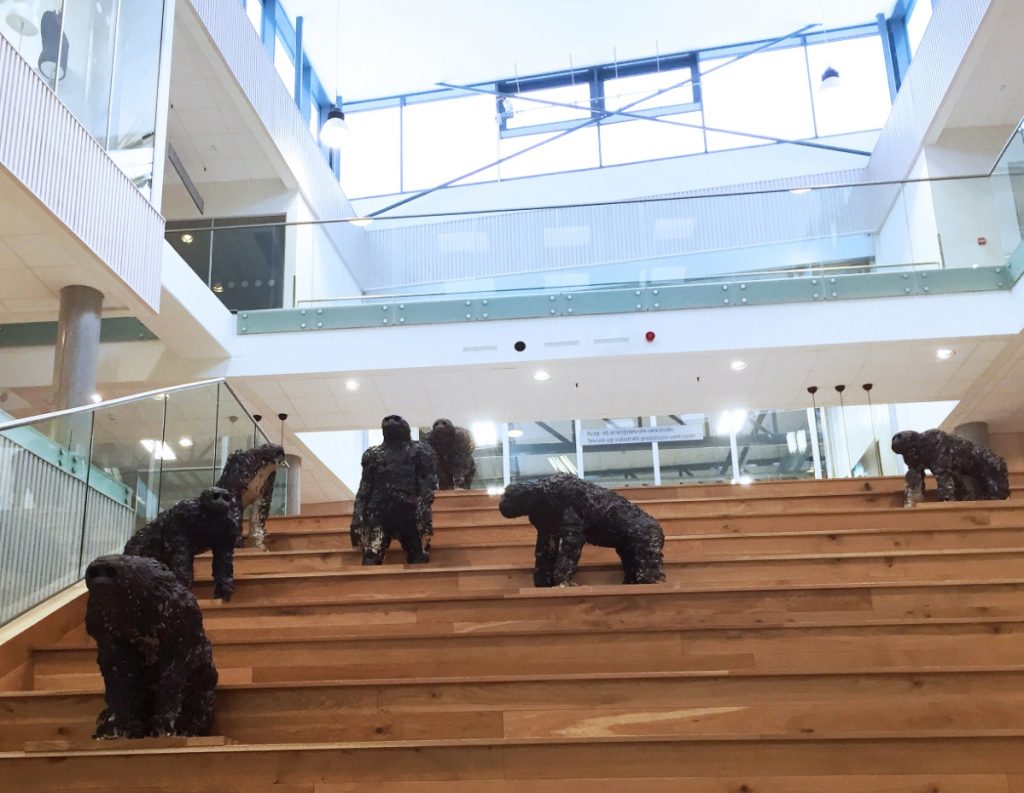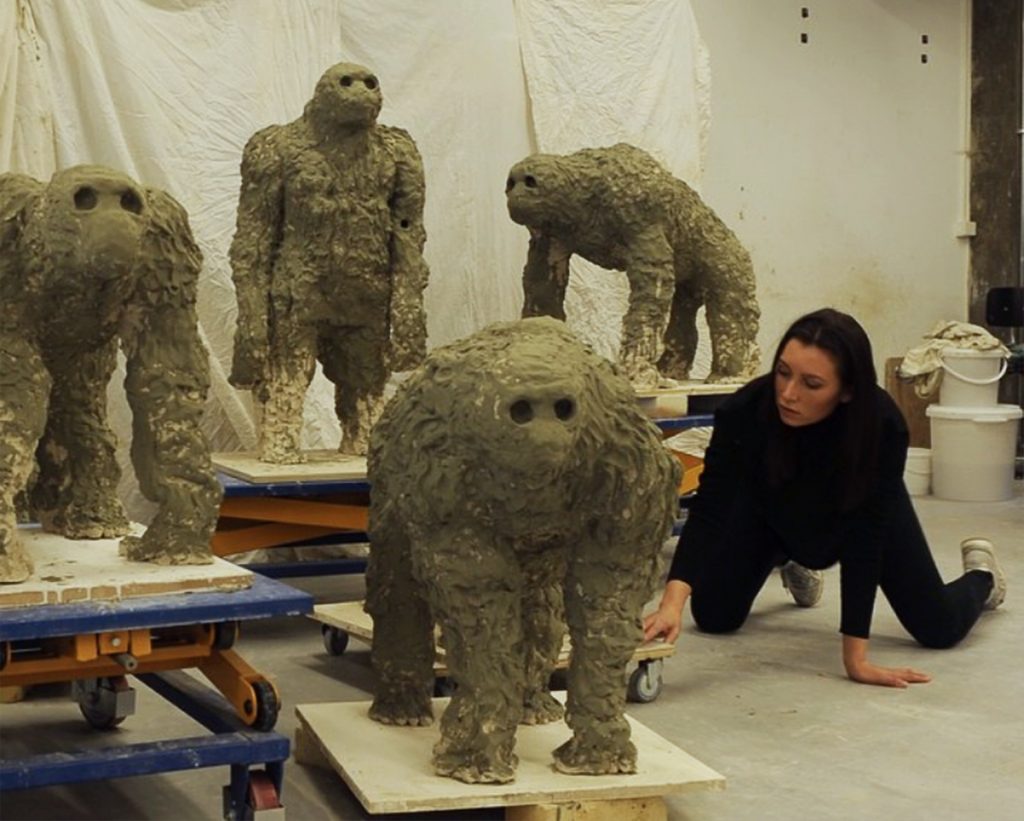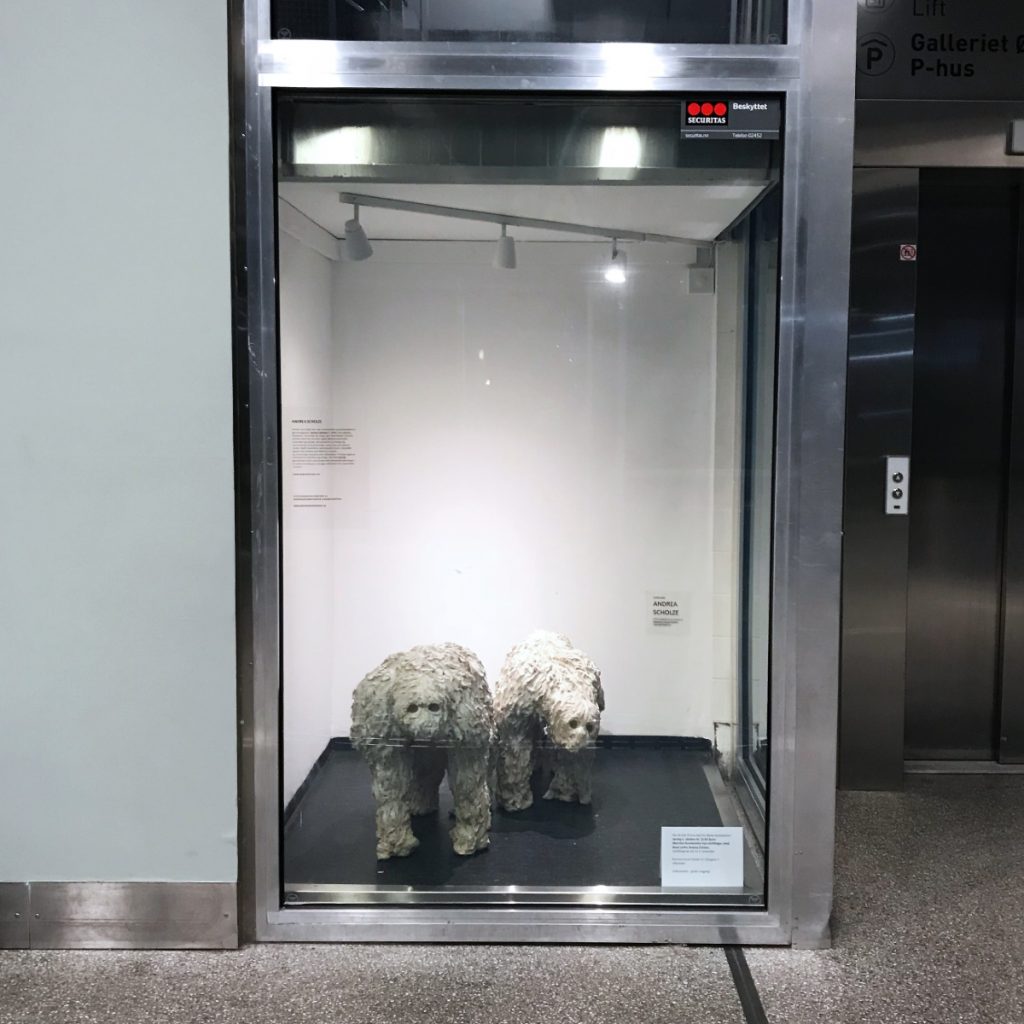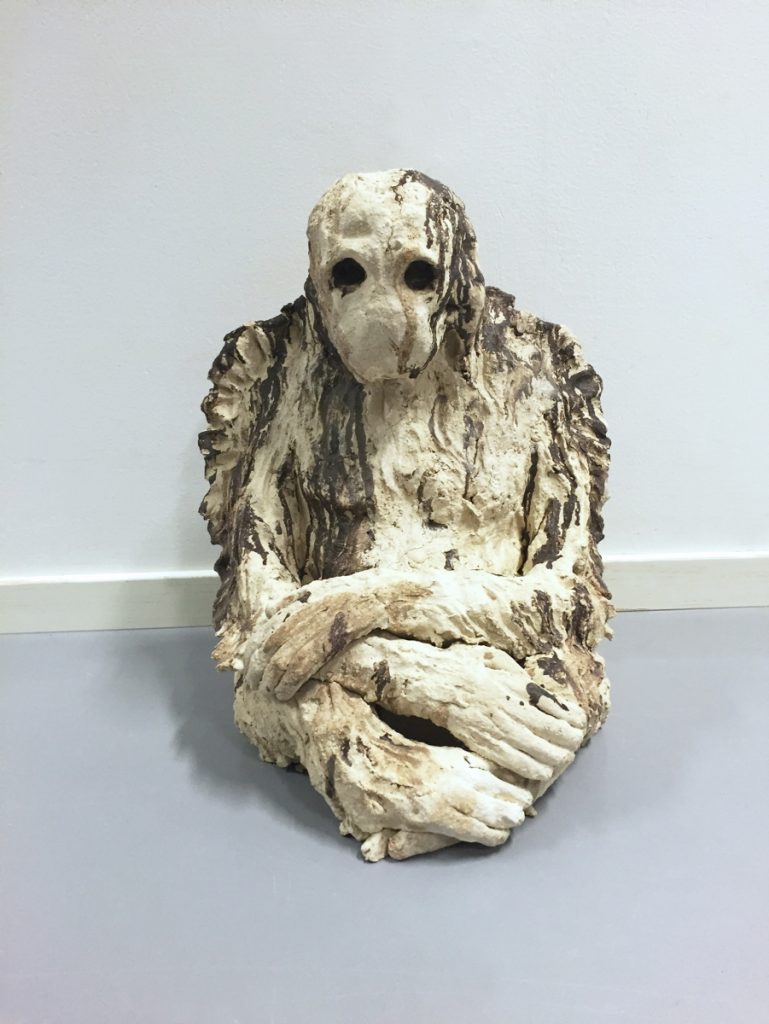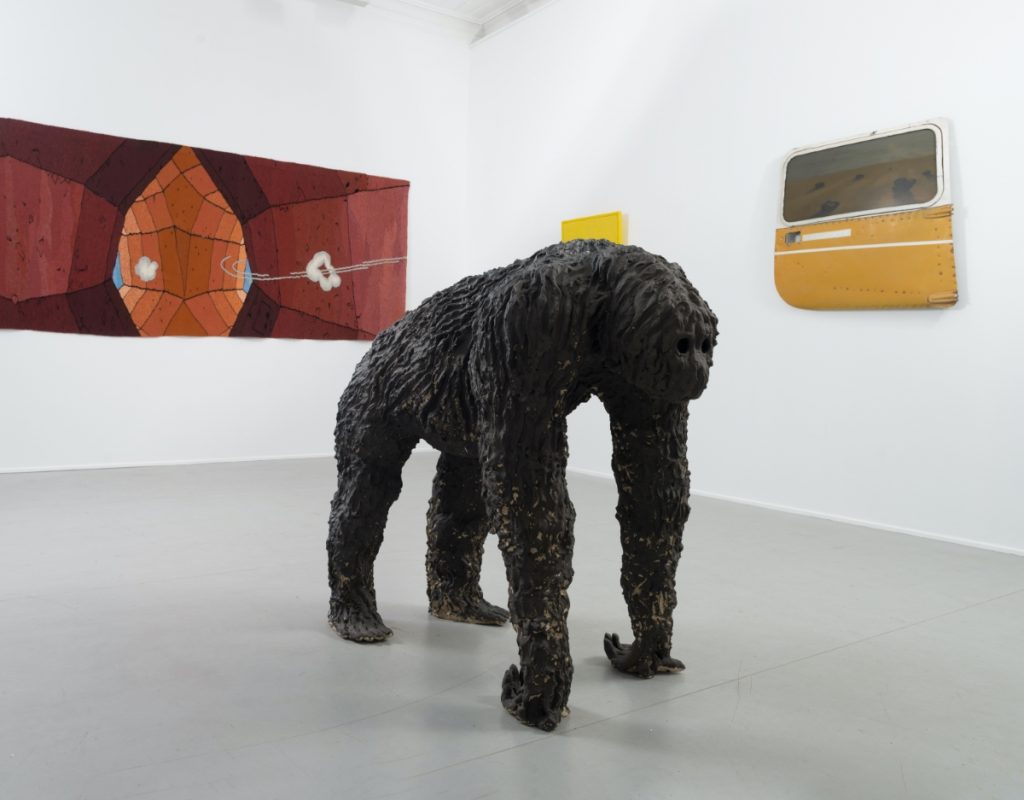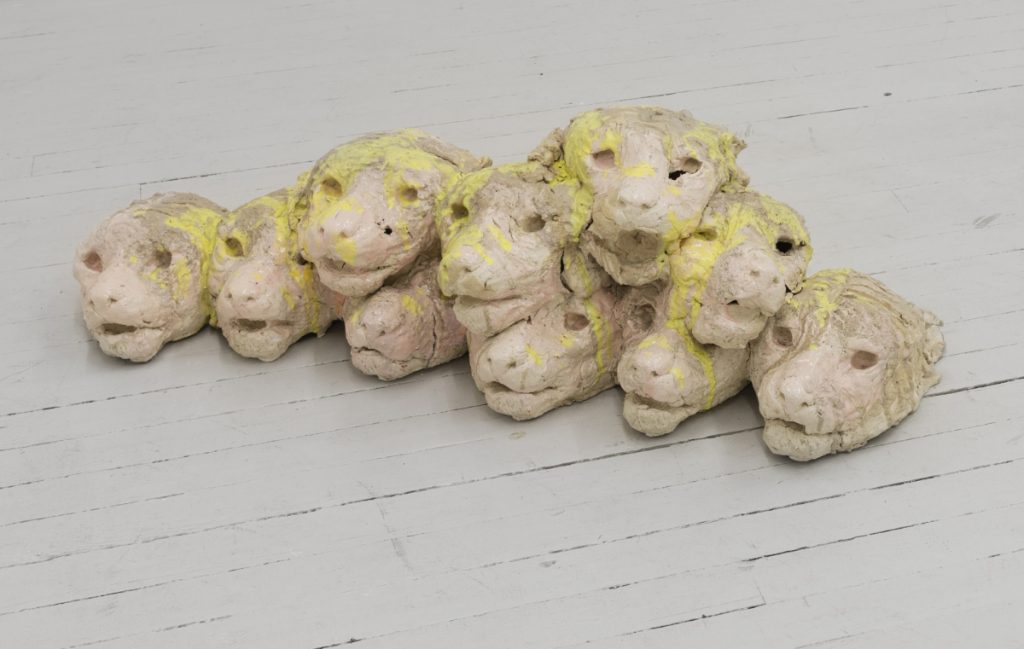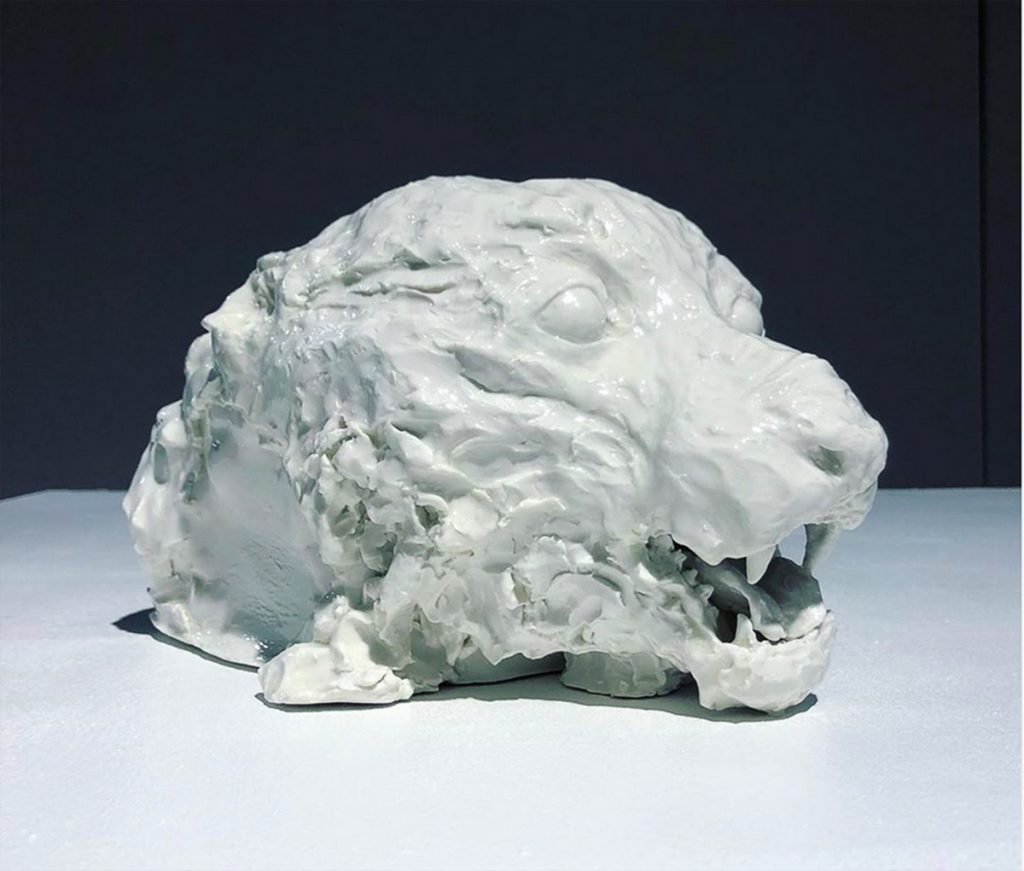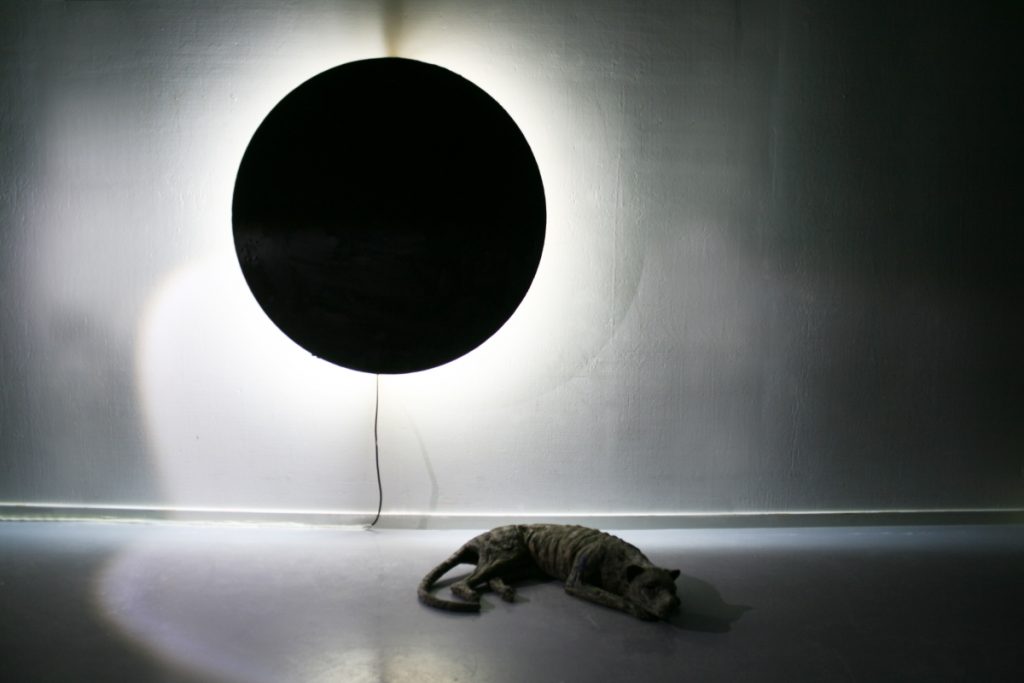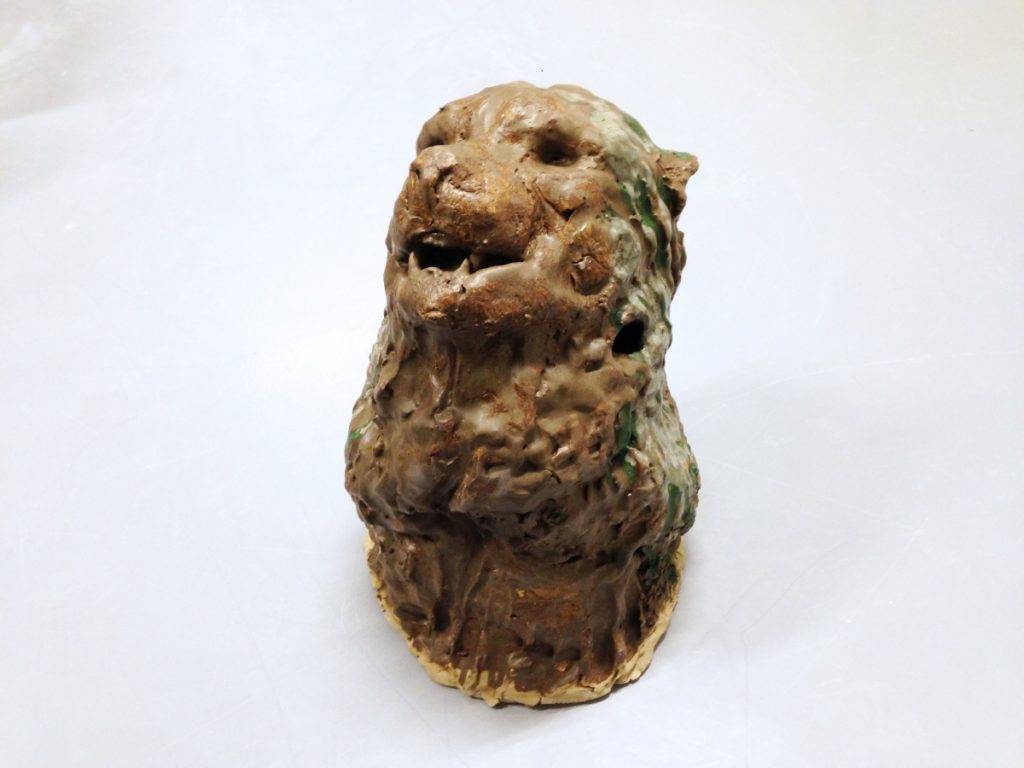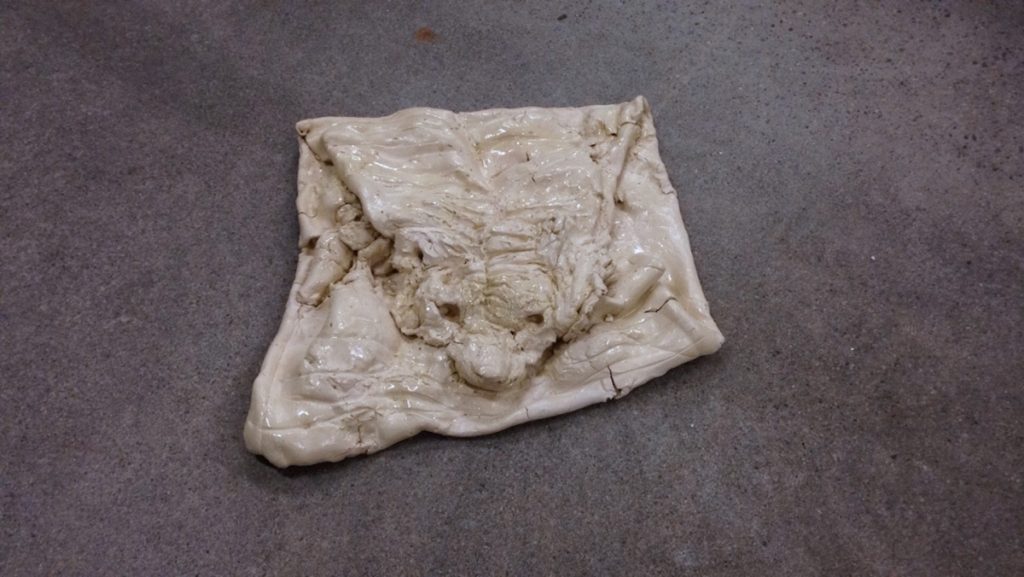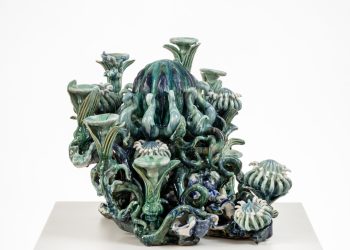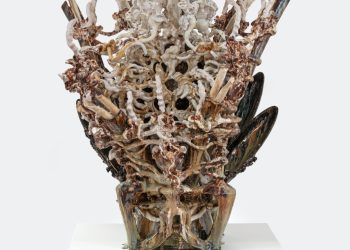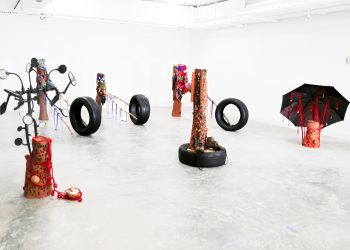Andrea Scholze: Selected works, 2014-2019
Apes
“Man of the Jungle” (2014, highfired stoneware with soil and plants) was triggered by an image of an orangutan mother and her baby surrounded by poachers. There was a bounty on the orangutan’s heads to remove them, as their home had been turned into a palm oil plantation and they were in the way. “Man of the Jungle” was exhibited at the annual National art Exhibition, the Autumn Exhibition in Oslo in 2014.
Through evolution humans have gained a powerful position on earth, and destruction has been/is part of that path. Many of Scholze´s beings are inspired by powerful animals, a roaring tiger, a strong ape, but in the works the creatures often hold a bleak look with their hollow eyes.
The apes as in science fiction films (which also has been an inspiration, with their dystopian themes), represent us in a way. They say something about life on earth, processes, what we have become. When sculpting her shrewdness of apes, Scholze modelled all at the same time. She used coiling technique and worked with a high intensity. The holes in the sculptures started as a way to pull out the clay from collapsing when modelling with such a high speed in the wet, heavy clay. It became part of her works, adding roughness to the works and exposing their hollowness. They were exhibited at the National Museum in Oslo, as part of the annual exhibition “Årsutstillingen” in 2015. The collection of seven sculptural works was purchased by KORO on behalf of the Buskerud county in Norway. The sculptures have since been installed in a school, where they are permanently displayed.
Man VS Nature
Humans’ position on earth, and how we interact with the other beings that we roam the earth with has had a major part in Scholzes oeuvre. Through her sculptures she has worked with different themes that assess how humans destructively interact with their surroundings. From reflections around endangered and extinct species, for example through her work “Black Sun”, portraying a ceramic creature inspired by the Thylacine (also known as Tasmanian tiger or Tasmanian wolf) under a dark solar disc. She also created several works showing different tiger-inspired sculptures; for example, a stack of trophy heads or a sun-bleached skin. The latter is a piece that came to be after seeing an image of a tiger skin left by poachers in the forest. The poachers only took the tiger’s bones to use for tiger bone wine. Several works started from thoughts surfacing in the aftermath of viewing images like this or learning stories from our world, and questioning how it came to be this way.
Full photo captions:
- Man of the Jungle, 2014, Stoneware, plants, soil, 120x210x100cm
- Untitled, 2015, Stoneware, Varying; 65x75x50, 75x85x60, 115x50x40 etc.
- Untitled, 2016, Stoneware, 115x50x40, Image: Patrick Parrish gallery
- Image moving the drying works, before firing.
- Untitled (Image from Oslo Bus Terminal), 2016, Stoneware, 57x70x38 cm and 51x65x35 cm 1, Image: Eirik Stensrud
- Untitled (sitting ape), 2016, Stoneware, 48x35x30cm
- Untitled, 2016, Stoneware, 130x60x105cm. Image: Thomas Tveter. From the duo-exhibition “Scene, View, Navigation” curated by Kjersti Solbakken at Galleri Format Oslo. Works on the wall in the background are by textile artist Kristin Sæterdal.
- Untitled (heads), 2014, Stoneware, 45x120x50cm, Image: Ayat, Podium
- Untitled (white), 2019, Porcelain, 18x33x22cm
- Black Sun, 2014, Stoneware, mdf, LED-lights, 190x145x85cm
- Untitled, 2015, Stoneware 35x25x20cm. In the permanent collection of the National Museum of Decorative Arts and Design in Trondheim, Norway.
- Fell, English: Skin, 2014, Stoneware, 10x70x60cm


